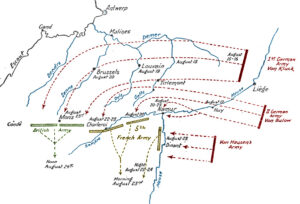A GM also has to be the tactician for the NPCs. There are various ways for GMs to run the opposition in battle.
Reactive Tactics
The opposition can react based on what the players characters do. If the hero brick squares off against the villain mentalist, the villain speedster could intervene. If the hero swordsman prepares to attack the enemy wizard, the enemy archer could attack the swordsman first, or else attack another hero who may be a more dangerous threat.
Proactive Tactics
The opposition can have a specific plan in mind before the battle starts, and coordinate tactics by some communication method for superior teamwork. A small group of lesser agents can be more than a match for any hero, if the agents coordinate tactics intelligently. If the villains have a chance to learn about the heroes, tactics can be tailored to the hero group. This can serve to very swiftly and effectively win a battle.
Consistent Tactics
The opposition can follow specific courses of action that the heroes can learn to expect over time. When the heroes expect that Silver Sapphire will probably try to hide in the shadows and attack from surprise later, they can assign one of their number to keep a close watch on the assassin, or attack her right away, or prevent her from hiding somehow, or whatever they decide upon. Of course, this works both ways. When the villains realize that Mind Molder usually tries to trick them all into wasting their attacks against the Indestructible Kid, they can attack the heroes at a distance from several angles, or wear ear plugs so that they cannot hear his commands, or ambush the team from disguise.
Example: Raven the Hunter is The Arachnoid’s jungle-themed archfoe. Raven catches the eight-limbed wonder in a net, but his prey is not worried. I know Ravens style—he’ll rant and rave for a while, then take me to his hideout and gloat. But is our hero ever surprised when The Bird of Prey pulls out a rifle and aims it at his captive’s head!
Evolving Tactics
The opposition can change tactics periodically to prevent a predictable style from being exploited. By attacking in new ways all the time, the villains keep the heroes always guessing. There’s an added feeling of insecurity and confusion among the heroes, which can serve to the villain’s advantage. This mishmash of tactics also makes for no specific modus operandi. The villains can commit crimes and not necessarily be the first suspects that come to the heroes’ minds. They might even be wearing different costumes! Evolving tactics are not easy to run. It’s hard on the villains to remember all the new maneuvers (Who am I supposed to attack first this week?), to coordinate with each other (What are you doing over here next to me? I thought you were supposed to be over there!), and to find the time to constantly practice all of this. And it’s even harder on the GM, who has to think up new combat strategies every time he uses the villain group.

The Rebels’ tactical command center prepares for the Death Star’s imminent attack.
Tactical Combinations
| Tactics | Consistent | Evolving |
| Reactive | Stupid, boring villains from past losses | Villains who learn |
| Proactive | Intelligent, determined villains | Villains who always keep the heroes guessing |
Where do your tactics usually fall?
Tactical Decision Ramifications
Reactive tactics are adequate, but not spectacular. Lukewarm doesn’t win any fights. By letting your players choose the tactics, they’ll always have the upper hand. Of course, in many genres, this is exactly what everyone wants. But there are certainly times when the villains need to be a serious challenge, and reactive tactics are not usually the best choice for that.
Proactive tactics are appropriate for opposition with a goal in mind. Whether that goal is to escape with the loot, kidnap the prince, or simply trounce a particular hero, if the group is unified in their pursuit of it, they have a much better chance of succeeding. Learning the ways of one’s enemy can provide for a much more exciting battle. Consistent tactics give the players a chance to study the enemy and effectively apply their insights later. This is often a very satisfying way to build teamwork among the heroes. Besides, when you find tactics that work, many times its best to stick with them. Consistent tactics are allowed occasional exceptions, but such exceptions should be dramatic and rare. They should shock both the participants and the audience.
Evolving tactics are generally better for villain teams with a high turnover rate, or teams that are so large that new individual villains show up often. Highly intelligent or even precognitive villain teams are also good candidates. In a campaign, evolving tactics are usually better when changed gradually. If it takes several combats for the villains to become a more effective combat unit, it seems more natural and more acceptable to the heroes.
Tactician Summary
There are different tactics that a GM can choose to have his villains use. Most often, tactics will not be a pure type, but somewhere in the middle of the extremes given here. When the GM finds the mix that seems right for his villains and his campaign, everyone has a good time.
Playing the tactician can be the most fun part of game mastering, but it can also be difficult. How do you best present a worthy challenge to your players?

